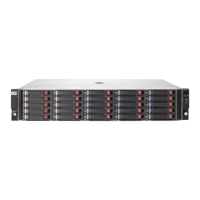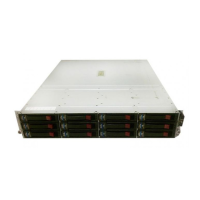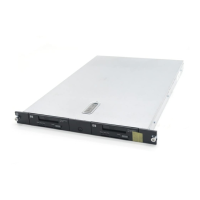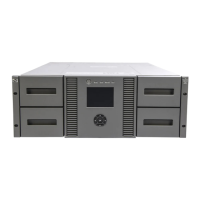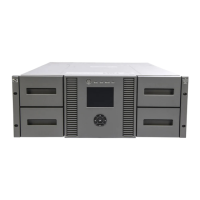Observe the following best practices:
• Assign a unique number to each storage port.
For example, ports in fabric 1 have aliases S1_A1 and S1_A2.
• Use a consistent alias naming convention for ports and HBAs throughout the configuration.
For example, configure HBA 1, S1_A1 and S1_B2 in fabric 1; configure HBA 2, S1_A2 and
S1_B1 in fabric 2.
• Define host connection names for the HBA WWNs similar to the alias names in the fabric.
For example, define alias WIN01_HBA1 for Windows server 1 and HBA 1.
Alias convention example
A storage system connected to two fabrics has the following aliases:
• First fabric:
• S1_A1
• S1_B2
• Second fabric:
• S1_A2
• S1_B1
Ports A1 and B2 are cabled to the first fabric. Ports A2 and B1 are cabled to the second fabric.
SAN scaling
When you expand a topology, avoid making changes that disrupt the original design goals. If data
access requirements have changed, consider migrating to a topology that meets the current needs.
A high-availability SAN design accommodates a nondisruptive expansion. See
“SAN fabric topologies” on page 35.
CAUTION:
HP highly recommends that you stop all I/O activity and back up all data before adding switches to
the fabric.
To expand a SAN:
• Use switches with a higher port count.
• Increase the number of switches.
To add switches to an existing fabric, ensure that the new configuration conforms to fabric rules.
See the following fabric rules sections:
• “Fabric rules” on page 86, for H-series switches
• Fibre Channel switch fabric rules, page 106, for B-series switches
• Fibre Channel switch fabric rules, page 146, for C-series switches
• Fibre Channel fabric rules, page 161, for M-series switches
• Add another fabric as a high-availability NSPOF solution.
• Implement Fibre Channel routing (see “Fibre Channel routing” on page 61).
• Deploy multiple independent SANs.
• Migrate to a different SAN topology (see “Topology migration” on page 58).
Best practices424

